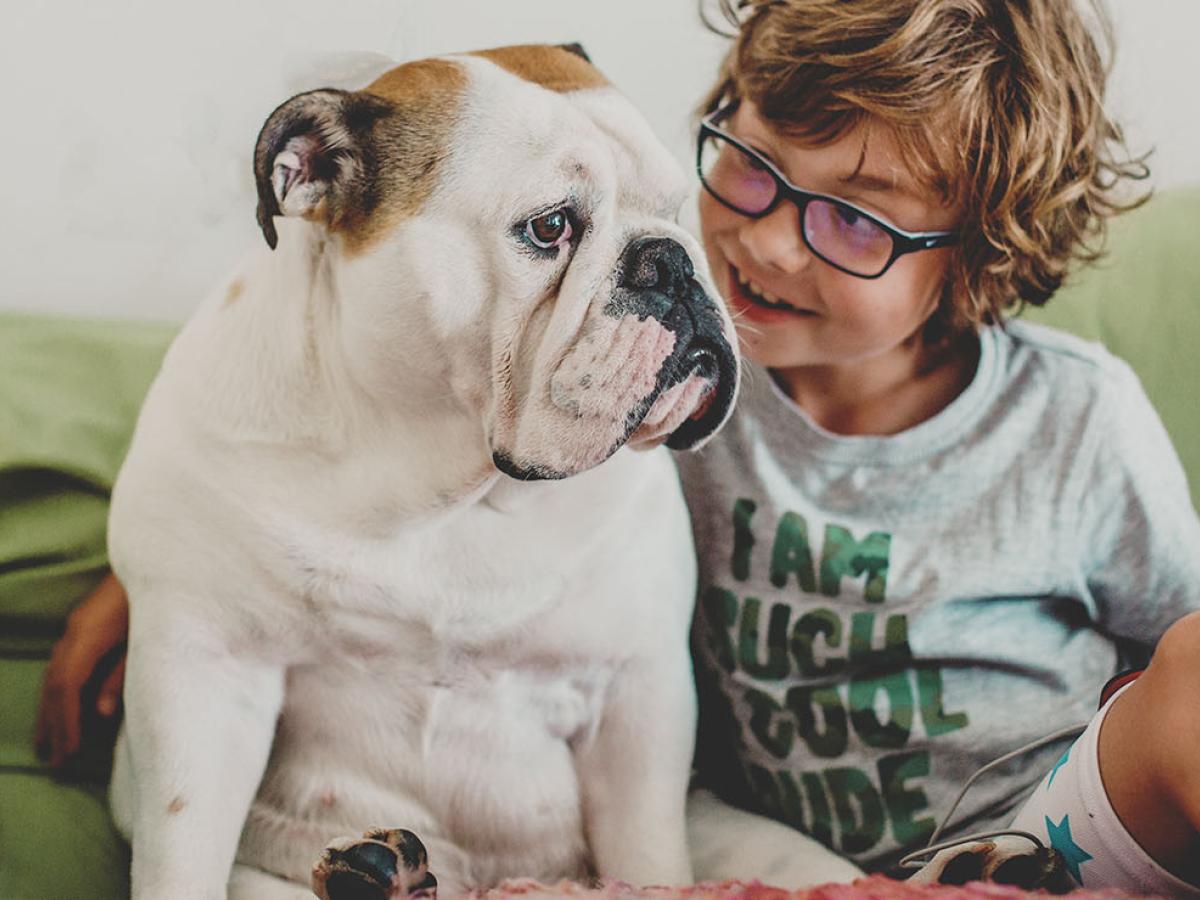March 23, 2022

There's nothing like the look of awe and happiness on a child's face when they meet a new pet for the first time. But if those tears of joy are eventually replaced by itchy eyes, sneezing and congestion, your child may have a pet allergy.
Being allergic to the family pet is pretty common — in fact, it affects 1 out of 10 people — but that doesn't always equate to having to say goodbye to your pet. To find out what a pet allergy means for your child, your family and your pet, we turned to Dr. Christine Franzese, an otolaryngologist (ear, nose and throat doctor) and allergy specialist with MU Health Care.

Here's what parents with pets need to know:
Understanding Animal Allergies
Most people associate a pet allergy with an animal's hair. The truth is, the allergy is a reaction to what's on the hair — sweat, oil and flakes of dead skin (dander). Other animal excretions, such as urine and saliva, can also trigger a reaction.
So despite what you might have heard about breeds like goldendoodles or schnauzers, there are no truly hypoallergenic, or allergen-free, pets with hair. And while some animals are naturally more allergenic than others (looking at you, cats), everything from hamsters to horses are fair game when it comes to allergies. According to the American Academy of Allergy, Asthma & Immunology, even hairless dogs produce some allergens. And, to make things worse, allergens can remain on furniture, carpets and clothing for months, long after the animal is gone.
The good news is that all allergens are not created equal: Pets with shorter or no hair and breeds that don't shed much typically cause fewer allergy problems. And as pets are spayed or neutered and grow older, they actually become less allergenic. If your child seems to be having an allergic reaction to a truly hypoallergenic pet (one without hair, like reptiles or fish) it's typically an allergy to something in the animal's tank, like mold.
Signs of Pet Allergies
Kids aren't born with a pet allergy — they develop it with age and exposure. Asthma, eczema and a family history of allergies all increase the risk. So while furry little Sprinkles might not have been a problem initially, that doesn't mean your child's newly developed symptoms aren't pet-related.
It's possible you may not recognize the signs of pet allergy right away, especially if your child lives with a pet full-time. If your child isn't regularly exposed to pets, you may notice acute symptoms during or right after meeting a new animal. Symptoms vary depending on the type of animal, the child and the exposure but may include:
- Coughing, chest tightness, shortness of breath and wheezing
- Facial pain (from nasal congestion)
- Skin rash or hives
- Sneezing or a runny or stuffy nose
- Watery, red or itchy eyes
A good rule of thumb: If your child has any ongoing cold-like symptoms that tend to coincide with exposure to a pet, it's worth getting checked out.
Testing for Pet Allergies
If you suspect a pet allergy, your first call should be to your child's pediatrician. There is a chance your child's symptoms aren't pet-related. If needed, your doctor will refer you to an allergy specialist who may test for a pet allergy in one of two ways:
- Skin prick test: This is the most common test for pet allergies and ironically feels like a kitten walking across the skin. A small needle pushes drops of allergens just under the skin's surface to see if a reaction forms.
- Blood test: Blood is drawn and tested for multiple allergies. There are no risks of a reaction, and results take several days.
Tips for Living With a Rodent, Cat or Dog Allergy
Having a pet allergy does not mean you need to say goodbye to the family pet or avoid pets altogether. There are steps you can take to safely manage the allergy while keeping your family's four-legged friend:
Reduce the exposure
The allergens your pet sheds should lessen with age. If you have a puppy or kitten, neutering or spaying also helps. In the meantime, make sure your child's sleeping space is allergen-free by keeping pets out of bedrooms. Vacuum all rugs and upholstery regularly and consider grooming your pet often to keep shedding to a minimum. If you groom your pet at home, try to do it outside.
Consider immunotherapy allergy treatments
Immunotherapy allergy treatments offer a safe long-term treatment option for children living with allergies and pets. The treatment desensitizes kids to allergens and lessens or stops their allergic reactions. Children can receive immunotherapy as:
- Drops (sublingual immunotherapy), given under the tongue at home
- Shots (subcutaneous immunotherapy), administered at the doctor's office
- Toothpaste (oral mucosal immunotherapy), customized with your child's allergy medication
No matter how your child receives immunotherapy treatment, it takes an average of three to five years for a child's immune system to develop resistance to an allergen.
Take over-the-counter medicine if exposure is brief
Even if you don't have a pet at home, your child may be exposed at grandma's, a friend's house or even at the park. If you know your child will be or has been exposed, taking over-the-counter medicines can help lessen the reaction. Look for nasal steroid sprays, allergy eye drops or oral antihistamines. Keep in mind that these medicines work best as a temporary treatment.
Next Steps and Useful Resources
- Need to speak with an allergy specialist? Find a doctor.


